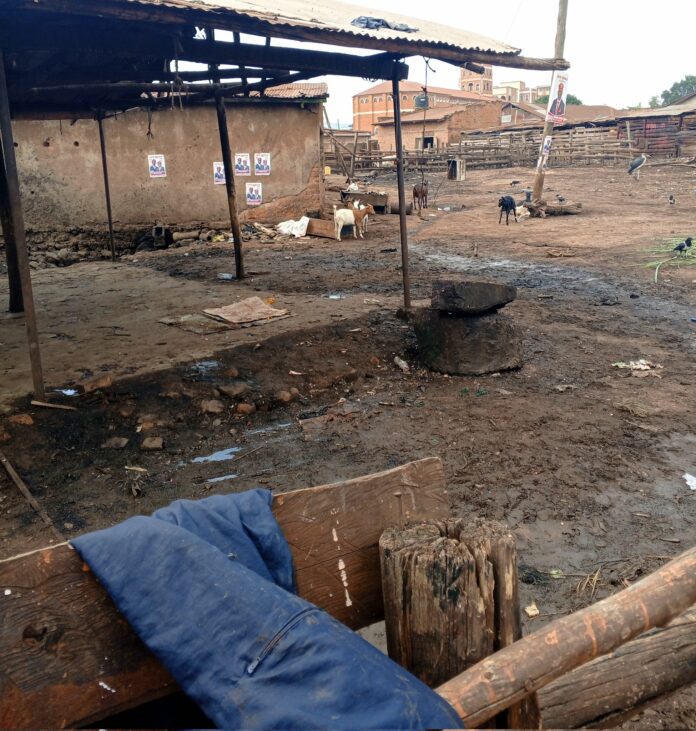By Johnson Kanyesige
Locals and visitors in Hoima City have continued to bear the poor state of meat, with animals currently being slaughtered from a filthy slaughter area which is located in Kiryatete East cell in Hoima East City Division.
The locals have continued to raise questions on why the modern abattoir project awarded to Chongqing International Construction Corporation-CICO contractors has stalled hence keeping them struggling with accessing clean meat around the city.
Morever according to the residents, the Hoima city authorities have failed to maintain the current slaughterhouse with lack of drainage channels and limited space for slaughtering of animals. The individuals who operate the old area say that the condition worsens during the rainy season.
In 2006, leaders in the then Hoima Municipal Council condemned the slaughterhouse and ordered for its immediate closure, but to date, the facility is operational.
Over 40 animals especially goats and cows are slaughtered daily at the filthy facility with the meat consumed by hundreds of locals in Hoima City and neghbouring areas like Hoima district. Majority of restaurants in Hoima consume meat form the slaughterhouse.
In May 2024, Members of Parliament who were on an oversight visit to a cross-section of abattoirs and slaughterhouses in parts of Western Uganda were shocked by the state of the abattoir saying it was unhygienic and posed several health risks to consumers of meat products from the facility. They recommended the facility be closed as well.
The City authorities through CICO contractors commenced the construction works for the modern abattoir in July 2022 with the facility sitting on a 6-acre piece of land located in Bulera cell in Hoima East division. The authorities earlier noted the modern abattoir will comprise of specialized slaughter hall, modern slabs, hide and skin room, meat preservation unit, disposal and treatment of inedible and condemned animals’ unit, and collection unit for waste products among others.
The major aim of the new facility according to the leaders was to improve on the quality of meat being consumed by people in the area. However, three years down the road, this target is yet to be achieved.
However, three years down the road, the goal of having an operation modern abattoir is yet to be achieved with several claims of lack of effective monitoring by the city leaders and missing of some elements during the preparations of the bill of quantities by the contractor something that led to the failure by the ministry of agriculture to approve the completion works of the new abattoir.
Some residents led by Fred Mujuni who operate businesses near the current slaughterhouse in Kiryatete say they are affected the strong bad smell that comes out of the area especially during the rainy season.
The residents say they are at a risk of contracting diseases and wonder the quality of meat they are currently consuming based on substandard area where it is being generated.
Brian Kaboyo, the Mayor Hoima City says the facility is in its completion stage and lacked a number of facilities like gate, house for the security man, the generator among others as guided.
Swaleh Kajuma, the Hoima City Production Officer admits that the current abattoir in Kiryateete East cell is in a deplorable state but says there a few technical things yet to be put in place at the new abattoir site in Bulera including an operation permit from the Ministry of Agriculture, Animal Industry and Fisheries (MAAIF) such that the facility becomes operational.
Kajuma has however failed to avail temporary plans by the city to have another safe and clean place for animal slaughtering other than the Kiiryateete abattoir.
According to researchers from the US based Biological Diversity, air and water pollution from slaughter facilities leads to health problems including headaches, breathing and heart difficulties, and irritation in the nose, eyes and throats. Residents may be unable to open windows or go outside due to dangerous toxins in the air.




